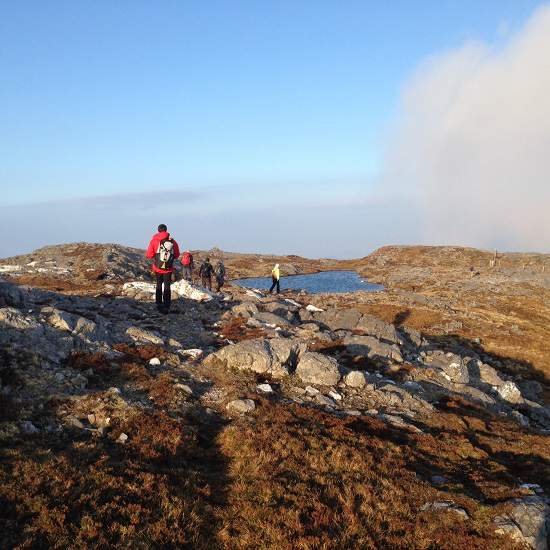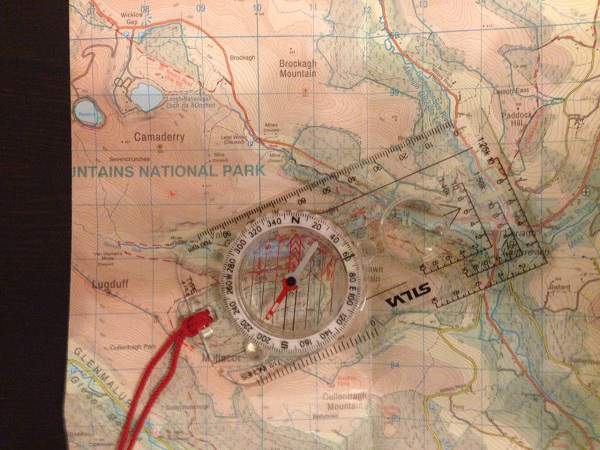I am writing this after just having decided not to attend a hike I was supposed to be going on today, Saturday (At time of writing). I planned to go out with some of my hiking friends, however really bad weather was forecast so I wasn’t 100% sure about it.

I decided I would wait till the morning to check the forecast and see how things looked. I got up this morning and the weather was VERY BAD! A lot of rain. The forecast for the rest of the day wasn’t much better either with consistent rain and possible heavy downpours as well as fresh (weatherman euphemism for chilly) North and North Easterly winds.
Hmmnn, I wondered if it was it a great idea to go out at all. So I was in two minds. I decided to check with one of my friends to be sure he was still going. I got a yes back as they can’t go out tomorrow and being back to work on Monday, they don’t have the option of waiting till tomorrow as I do. Now the weather is still not great tomorrow anyway but the forecast isn’t as bad as today.
When I got the confirmation, I thought what the hell and decided to still go. I have all the gear and I have got VERY wet on many an occasion while out hiking.
Preparation
I started my usual routine to prepare and while packing up some stuff into my day pack, I realized I didn’t have my hiking beanie hat. I wasn’t where it normally is kept in my day pack. I thought about it and realized I had probably lost it on the hiking challenge weekend I went on a week or so ago. Well, that was the last time I recall having it anyway.
I went upstairs to look for another warm beanie hat but I don’t really have another one suitable for hiking. I only really had a standard beanie that was a bit thin on it and is more for summertime fashion as opposed to Spring downpours! I thought, what the heck and threw it into my day pack where my old hat normally sits.
So, a new dynamic had now entered the fray and one I wasn’t 100% comfortable about. Now, not only do I have to contend with really bad rain and cold winds, I now don’t have the best protective gear for my head for those conditions. Not ideal!
I put it out of my mind and got into my car and started heading down the road to the meeting point. The rain was pouring down on my window as I was driving. All the time, the hat thing was playing on my mind, as well as the weather though too, as how it was was much more pronounced while driving in my car.
As I mentioned, I didn’t have to go out today, I could wait till tomorrow as I didn’t have the same time pressure as my friends. I was hmmnning and hawing and then decided, no, the weather was too bad, I don’t have all the right gear and as I can go out tomorrow, why head out today. I turned round to head back home and text my friends when I got back.
The Deciding Factor
So, on reflection after that I was thinking on what was the deciding factor in my decision as I did to and for a fair bit as I processed it. In the first place, I didn’t have to go out hiking today as I can go tomorrow so there was no necessity for me to go out in very bad weather, I could just wait for tomorrow.
However, hiking in rain can be fun too and a short 20 km hike in the right gear would be fine to do. When I thought about it, there was another factor that tipped the balance and that was that I had no proper hiking hat.

You need to protect your head in cold and wet conditions as heat leaks from it when it is exposed. I might have been OK with my substitute fashion beanie lol, but why risk it when I don’t need to!? At worst, something could happen and I can’t walk out, with no real protection for my head, it will just make a bad situation worse.
At best, nothing happened and the temporary hat did fine. However, the likely outcome was probably somewhere in the middle. I’d have a very wet and cold head and so probably quite likely a miserable experience while out hiking. No fun 🙁
If I had the hat, would I have gone on a hike in crappy rainy and cold weather? Probably, even though I was in two minds anyway, as it is a really nasty day lol 🙂 , hiking in the rain can be good and brings it’s own set of challenges and fun. Nature is splendid in all of it’s forms, within reason of course.
When I got back home and thought about it, I realized that I had just went through a risk assessment in my head. I do it all the time when I go hiking, for all hikes and all conditions as there are always risks involved.
Summary
There will always be risks of some kind on all your hikes however, if you assess them properly you can prepare appropriately. In short, there’s no need to take unnecessary risks hiking.
In this case for me it was gear and I think this is one that catches a lot of people out a lot of the time. I was short what some might think of as a relatively inconsequential item, a proper hiking hat.
However, that gear item is key to protecting my head and keeping me insulated. If I don’t have a proper one and if the weather forecast is really bad rain with expected downpours, it makes no sense to risk it.
As mentioned above, if something happened to me and I couldn’t walk out, with my head not protected in a proper manner, it would very quickly exacerbate my problems.
Conclusion
So, the moral of the story is that you should always assess all elements of your planned hike for risks, your safety on the trail is always the most important thing. Think gear, weather, terrain, environment, food and water, timing, sunset, sunrise, emergency contact, to name some of the key ones. If you have any doubt about any of these and other factors for your hike, it’s wiser to stay safe and cancel. You will get out on another day 🙂
Aside from all that was there a lesson learned today? Yes, always have a spare hiking beanie! I have spares of a lot of my hiking gear but interestingly, my hiking beanie wasn’t one of them! I’m off to the store now to buy two of them so I’ll always have a spare. You can see the fruits of my shopping excursion in the picture above 😉
What do you think? Do you always do a risk assessment for all of your hikes? I’d love to hear your thoughts in the comments below.

